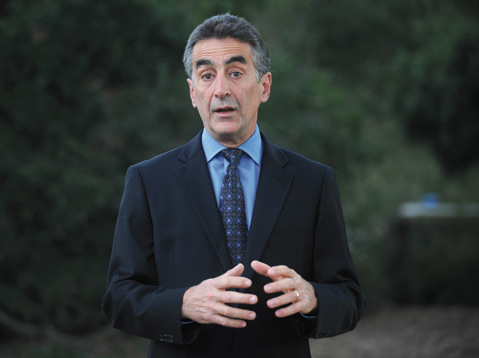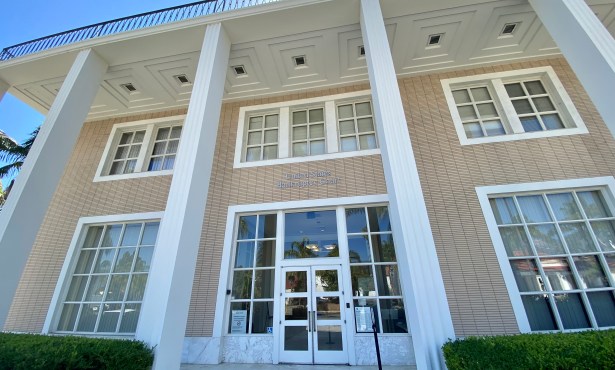S.B. Officials Peeved at State 9-1-1 Agency
They Received 'Useless' Documents After Requesting Info on Cell Phone Routing Problem

“In what other part of your life does this incredible invention make your chance of survival worse?” asked Santa Barbara City Fire Chief Pat McElroy as he held up his iPhone. What began more than two years ago as a warning from Dr. Angelo Salvucci, head of the county’s Emergency Medical Services Agency, about the state’s 9-1-1 system and its incompatibility with wireless devices has swelled into growing frustration and prompted a united response from area politicians, fire chiefs, and health officials.
Because the first mobile phones were installed in cars, the California Highway Patrol (CHP) was once the best agency to receive 9-1-1 calls. But that’s changed considerably since more than 70 percent of 9-1-1 calls today come from cell phones far from a freeway. A sizable portion of those calls, though, still end up at CHP dispatch centers. In Santa Barbara, the closest CHP center is about 30 miles south in Ventura.
Exactly what percentage of wireless calls made in Santa Barbara are sent to CHP’s Ventura dispatch is unknown. And how much time the transfers waste is also unclear. The recent death of 24-year-old Jordan Soto heightened awareness of the problem, and in her family’s pending lawsuit, they allege that a misrouted 9-1-1 cell call delayed paramedics and contributed to her death.
In February, the county’s Fire Chiefs Association submitted a public records request to the state agency’s director, Karen Wong, demanding Excel spreadsheets for all wireless 9-1-1 call records from January-May 2014 and information for every cellular antenna that receives calls originating in the county. Two months later, they received 1,200 pages of unsearchable documents.
“The forms we got were useless,” McElroy said. “It truly is a partnership … Right now I don’t especially feel that.” The Santa Barbara Independent requested the total number of transfer calls from the Ventura Dispatch Center, but a CHP spokesperson could not provide the information, citing “a glitch in the data.”
The state did make a dent in the problem of misrouted calls with the RED (Routing on Empirical Data) Project implemented in about 13 percent of the state’s cell sectors in 2008 by Santa Barbara–based Public Safety Network. But the project ended in 2011.
Last Thursday, before an Assembly committee in Sacramento, Salvucci argued that the RED Project should be restarted. He rebutted a previous claim that the project would take three years to reach all cell sectors in the state. “Three years could have started two years ago,” he declared.
Last April, Assemblymember Das Williams met with Wong about the issue, and Wong agreed that something needed to be done. But a year later, Williams contended, nothing has changed, and he has yet to receive concrete answers.
In an email to this paper, Wong said the issue is complex and is being researched by the 9-1-1 Advisory Board’s working group, with recommendations due to the board in May. She added the RED Project reduced the number of 9-1-1 busy signals from about 42 percent to 2 percent during its existence.
“There is no ‘simple switch’ to turn on the RED project,” Wong said. “It has been implied that we can order the services today. … However, this would be a multimillion-dollar contract providing statewide services.” As to the 1,200 pages of documents given to Santa Barbara’s fire chiefs, Wong said her office provided the information that was officially requested.
In the past, money was reportedly cited as a reason that the RED Project’s contract was terminated. But a number of sources have since questioned that logic since the project cost about $3.5 million dollars a year, a fraction of the system’s total budget, which comes from a nominal California Public Utilities Commission charge that people pay for 9-1-1 services.
A second problem with the system is figuring out the exact location of a cell phone caller, and the remedy is years away. Per Federal Communications Commission rules, dispatchers are supposed to receive information about a wireless caller’s longitude and latitude but are limited from getting more specific data. This is especially problematic when callers are indoors in dense urban areas.
In the next five years or so, officials say the state will adopt Next Generation 911, a statewide update that would address a host of problems. Last month, Williams introduced a bill, AB 510, that would require a study to be completed on the current system by 2017.



